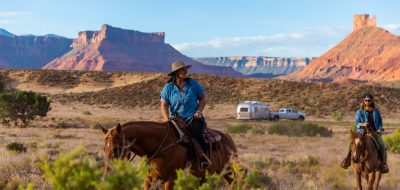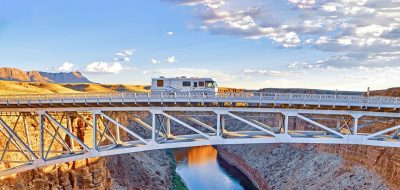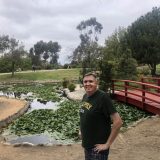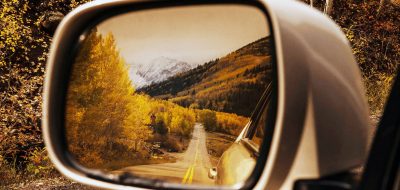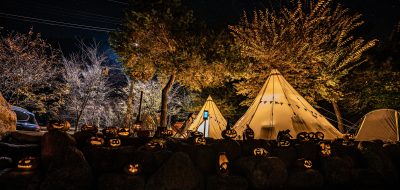“There is an eloquence to their forms which stirs the imagination with a singular power and kindles in the mind . . . a glowing response.”
—Geologist Clarence E. Dutton, reflecting on his impressions of Zion, 1880
Long before its official designation as a National Park by President William Taft, Zion was a frequent home to Paiute Indians.
The first homesteader to hang his hat at Zion was Isaac Behunin in 1861. While life was difficult for the pioneer, Behunin was still appreciative of the beauty of his surroundings. “A man can worship God among these great cathedrals,” said Behunin, “as well as in any man-made church—this is Zion.”
When explorer John Wesley Powell visited in 1872, he used the Paiute word Mukuntuweap, which means “straight canyon.”
Zion National Park was established as Mukuntuweap National Monument by President William Taft on July 31, 1909 and elevated to a national park by President Woodrow Wilson in 1919.
Zion National Park is known for its majestic towering rock mountains which rise to awe-inspiring heights. Zion is a lush green oasis, surrounded by startling sentinels of stone. With sheer, milky-white cliffs and pristine waterfalls, Zion is one of the most beautiful places on earth.
The park celebrated its “Century of Sanctuary” in 2009, marking that milestone with special events and interpretive activities.
Zion attracted 2.7 million visitors in 2008, making it one of America’s most visited national parks. A trip to Zion can be enjoyed in a few hours, a few days, or over a lifetime.
Exploring Zion Canyon during the off-season gives one the flexibility that is impossible seven months of the year. From April through October, private cars are prohibited in the canyon, and visitors must use park shuttles. With 11,000 daily visitors, it’s hard to dispute the need for such restrictions—or their importance to the Zion environment. Still, it’s nice to be on our own—and free of crowds. No offense to the two million or so peak-season visitors.
There are two shuttle loops. One stops at six locations in Springdale and drops visitors at the Zion Visitor Center. The other shuttle loop starts at the Zion Visitor Center and makes eight stops in the canyon. Shuttles run often and are free.
Zion is a place of extremes—the watery lushness of the Narrows, cut deep by the Virgin River, contrasts with the dizzying heights of Scout Lookout, with its spectacular views of the canyons below.
There are formations like the Watchman, which towers 2,600 feet above the road, and others with dramatic names such as the West Temple, Mountain of the Sun, Towers of the Virgin, and the Three Patriarchs. And at one spot in the park, you drive through a 1.1-mile tunnel bored through solid rock.
One beauty of this park is in the perspective it offers. Unlike most other Utah parks, Zion is a canyon viewed mostly from below. A lodge and cabins are nestled on the canyon floor. White and vermilion cliffs tower all around, some of them reaching nearly 8,000 feet.
The main canyon in Zion, center of park activity, was cut by the North Fork of the Virgin River. It is narrow, less than a quarter-mile wide. But it is deep, flanked by towering sandstone palisades 2,000-3,000 feet high that draw rock climbers who savor big walls. The six-mile canyon drive ends at a formation known as Temple of Sinawava, where the canyon begins narrowing to a slot only 30-40 feet wide.
Photo Tips
Pay attention to the lighting. Contrary to popular belief, do NOT shoot with the sun directly at your back. Doing so will make the light on the subject flat.
Use a polarizing filter; for maximum benefit move so that you’re at a 90-degree angle to the light. Most great photos are either side-lit or have the light coming in from a different angle.
Be patient. To shoot photos in the outdoors and especially in a natural wonderland like Zion, patience is a must. It’s often a waiting game for the right light conditions.
Zion National Park
Details
Operating Hours: Open year-round, 24 hours a day
Admission: $25/vehicle (good for 7 days); all federal lands passes accepted
Large RV tunnel escort fee: $15 in addition to entrance fee
Pets: Not allowed on any hiking trails or anywhere in the backcountry
Location: Just east of Springdale on Highway 9
Camping: $16-18/night; Watchman Campground is undergoing construction through April 2011; many loops will be closed at various times. Check the Watchman Campground Page for full details.
Reservations for campsites at Watchman Campground for camping from March 5, 2011 through November 13, 2011 may be made six months prior to your arrival date online at www.recreation.gov.
Address: Springdale, Utah 84767
Contact: (435) 772-3256
Worth Pondering…
Nothing can exceed the wondrous beauty of Zion.
—Clarence E. Dutton, 1880
If you enjoyed this article, you might also wish to read
Hell of a place to lose a cow: Bryce Canyon National Park, UT
Miracles of Nature: Arches National Park, UT
Devil’s River Ranch: A Christmas Gift for the State of Texas
Quartzsite 2011 RV show dates announced
If you enjoy these articles and want to read more on RV travels and lifestyle, visit my website: Vogel Talks RVing.


